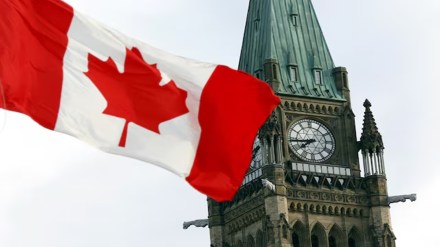Canada is making a conscious effort to reduce the number of international students and foreign temporary workers coming into the country.
Canada’s 2025-2027 Immigration Levels Plan aims at reducing Canada’s temporary population to less than 5%.
Total arrivals, including international students and foreign workers, experienced a nearly 57% decline in the first half of the year when compared to the same period in the prior year.
The number of new foreign students arriving in Canada has decreased in the first half of 2025 compared to the same period in 2024, with 214,520 fewer arrivals.
This is an over 70% fall in the number of international students and a 50% decline in foreign work permits.
In 2025, the rejection rate for Indian students seeking Canadian study permits reached 80%, marking them as the most impacted international student demographic.
Why Fewer Students Are Going to Canada
Canada introduced an annual cap on international student study permits in 2024, and announced a further 10% reduction in 2025. For 2025, IRCC plans to issue a total of 437,000 study permits, which represents a 10% decrease from the 2024 cap.
Canada also increased acceptance letter review to prevent study permit fraud. Effective December 1, 2023, post-secondary Designated Learning Institutions (DLIs) have to verify each applicant’s letter of acceptance directly with IRCC to prevent prospective students from experiencing letter-of-acceptance fraud.
Canada has also raised financial requirements for foreign students. For 2024, a single applicant had to show they had $20,635 in savings. Beginning September 1, 2025, students will be mandated to demonstrate over $2,000 in additional funds. The minimum required funds for a family of one, including first-year tuition and travel costs, have been hiked from $20,635 to $22,895.
Also, Canada ended the Student Direct Stream in November 2024. The Student Direct Stream was an expedited study permit processing initiative for those applying to study in Canada at a post-secondary designated learning institution (DLI).
Why Fewer Foreign Workers Are Going to Canada
On September 26, 2024, Canada set a 10% cap on low-wage hires per workplace (20% in certain in-demand sectors) and introduced a refusal-to-process policy in urban areas with unemployment at or above 6%.
As of November 8, 2024, more positions are subject to these rules due to an increase in the wage threshold for the high-wage stream. A greater number of jobs are subject to the stricter rules of the low-wage stream, including additional employer requirements related to housing, transportation and recruitment of workers already in Canada.
The starting hourly wage for workers coming into Canada through the high-wage stream has been increased by 20% higher the previous level.
Canada expects the number of work permits and extensions to go down in the months ahead to reflect the impact of the new measures.
Additionally, Canada has already tightened eligibility requirements for the PGWP to better align the program with immigration goals and labour market needs.
